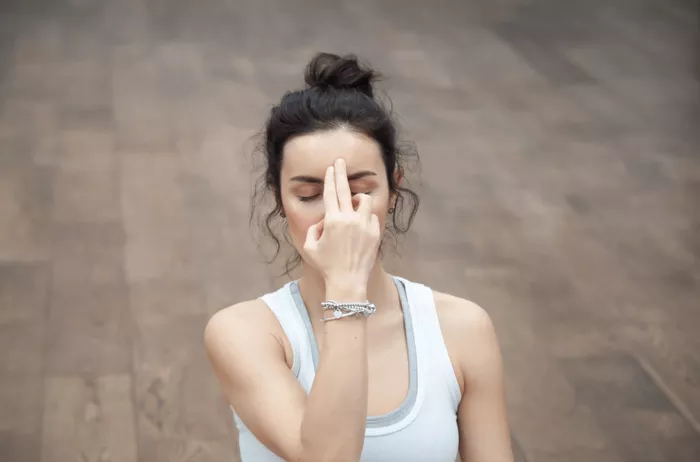Breathing is an integral aspect of yoga practice, serving as a fundamental link between the body and mind. Known as pranayama, the practice of regulating the breath holds significant importance in various forms of yoga. Different types of breathing techniques are employed to achieve specific outcomes, ranging from calming the mind to energizing the body. In this article, we delve into the diverse array of yoga breathing techniques, exploring their methodologies and potential benefits.
1. Ujjayi Pranayama
Ujjayi pranayama, often referred to as victorious breath or ocean breath, is a foundational technique in many yoga traditions. This technique involves constricting the throat slightly while breathing in and out through the nose, creating a soft hissing sound resembling the sound of ocean waves. Ujjayi breathing helps to build internal heat, increase concentration, and cultivate mindfulness during yoga practice. It is commonly utilized in dynamic yoga styles such as Ashtanga and Vinyasa to synchronize movement with breath.
2. Nadi Shodhana (Alternate Nostril Breathing)
Nadi shodhana, or alternate nostril breathing, is a balancing pranayama technique aimed at harmonizing the flow of energy in the body. Practitioners use the thumb and ring finger to alternately close off one nostril while inhaling and exhaling through the other. This rhythmic breathing pattern is believed to purify the energy channels (nadis) and calm the nervous system, promoting a sense of equilibrium and mental clarity. Nadi shodhana is often incorporated into yoga sequences as a preparatory practice for meditation.
3. Kapalabhati (Skull Shining Breath)
Kapalabhati, known as skull shining breath, is an invigorating breathing technique that involves rapid, forceful exhalations followed by passive inhalations. This dynamic breathwork stimulates the abdominal muscles and diaphragm, facilitating detoxification and increasing vitality. Kapalabhati is thought to clear the mind, improve focus, and awaken dormant energy in the body. However, it requires careful practice and should be avoided by individuals with hypertension or other cardiovascular conditions.
4. Bhastrika (Bellows Breath)
Bhastrika, or bellows breath, is another energizing pranayama technique characterized by rapid and forceful inhalations and exhalations. Similar to kapalabhati, bhastrika generates heat in the body and increases oxygenation of the blood. It is believed to boost metabolic function, enhance lung capacity, and promote mental alertness. Bhastrika is often practiced in conjunction with other yoga asanas to intensify the overall experience and invigorate the practitioner.
5. Sitali (Cooling Breath) and Sitkari (Hissing Breath)
Sitali and sitkari are cooling pranayama techniques that involve inhaling through the mouth with the tongue extended or positioned between the teeth, respectively. These breaths are believed to reduce body temperature, alleviate thirst, and pacify excess heat in the body. Sitali and sitkari are particularly beneficial during hot weather or times of emotional agitation, helping to create a sense of inner calm and balance. Additionally, they can soothe inflammation and irritation in the throat and respiratory system.
6. Dirga Pranayama (Three-Part Breath)
Dirga pranayama, also known as three-part breath or complete breath, emphasizes deep, diaphragmatic breathing to maximize oxygen intake and relaxation. Practitioners sequentially fill the lower abdomen, ribcage, and upper chest with breath, then release the breath in the reverse order. This technique promotes conscious breathing, reduces stress, and enhances awareness of the breath’s movement throughout the body. Dirga pranayama serves as a foundational practice for cultivating mindfulness and presence on and off the yoga mat.
7. Bhramari (Bee Breath)
Bhramari pranayama, or bee breath, involves producing a buzzing sound while exhaling deeply through the throat. This technique helps to release tension, soothe the nervous system, and induce a state of tranquility. The resonant hum of the bee breath can drown out mental chatter and distractions, allowing practitioners to delve into a meditative state. Bhramari is often integrated into yoga sequences as a calming counterbalance to more dynamic practices, facilitating relaxation and inner stillness.
8. Surya Bhedana and Chandra Bhedana (Sun and Moon Piercing Breath)
Surya bhedana and chandra bhedana are pranayama techniques associated with the solar and lunar energies, respectively. Surya bhedana involves inhaling through the right nostril and exhaling through the left nostril, whereas chandra bhedana reverses the pattern. These practices are believed to activate specific energetic pathways in the body, balancing masculine (solar) and feminine (lunar) aspects of being. Surya bhedana is associated with increased vitality and focus, while chandra bhedana is linked to relaxation and introspection.
Conclusion
The diverse array of yoga breathing techniques offers practitioners a versatile toolkit for enhancing physical, mental, and spiritual well-being. Whether seeking to build internal heat, restore balance, or cultivate mindfulness, incorporating pranayama into a yoga practice can deepen one’s connection to the breath and unlock profound benefits for overall health and vitality. Through dedicated practice and exploration, individuals can harness the transformative power of breath to enrich their yoga journey and navigate life with greater awareness and presence.
















